Train Travel? Here’s Why.
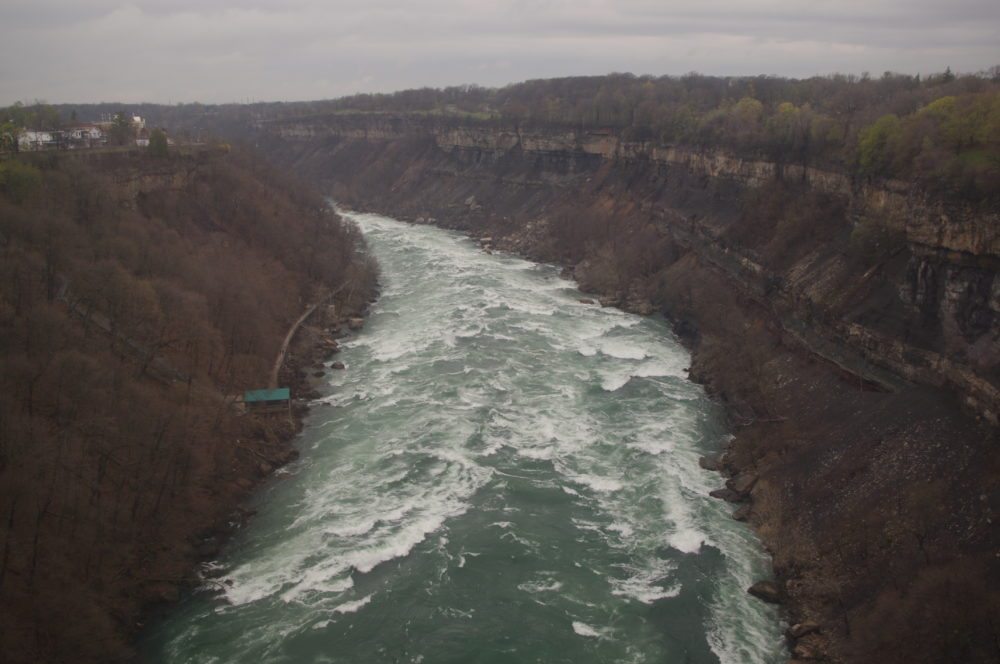
It’s Better Than a Stupid Wall
Two hours after departing Toronto’s Union Station, VIA Rail Train #64, The Maple Leaf, arrives at the U.S. border, which is clearly and impressively marked by the Niagara River. Passengers take their bags off the train, pass through Customs and Immigration, then lug their bags back aboard what is now Amtrak’s Train #64 for the remaining 12-hour ride through Buffalo and Albany and down the Hudson Rover to New York City.
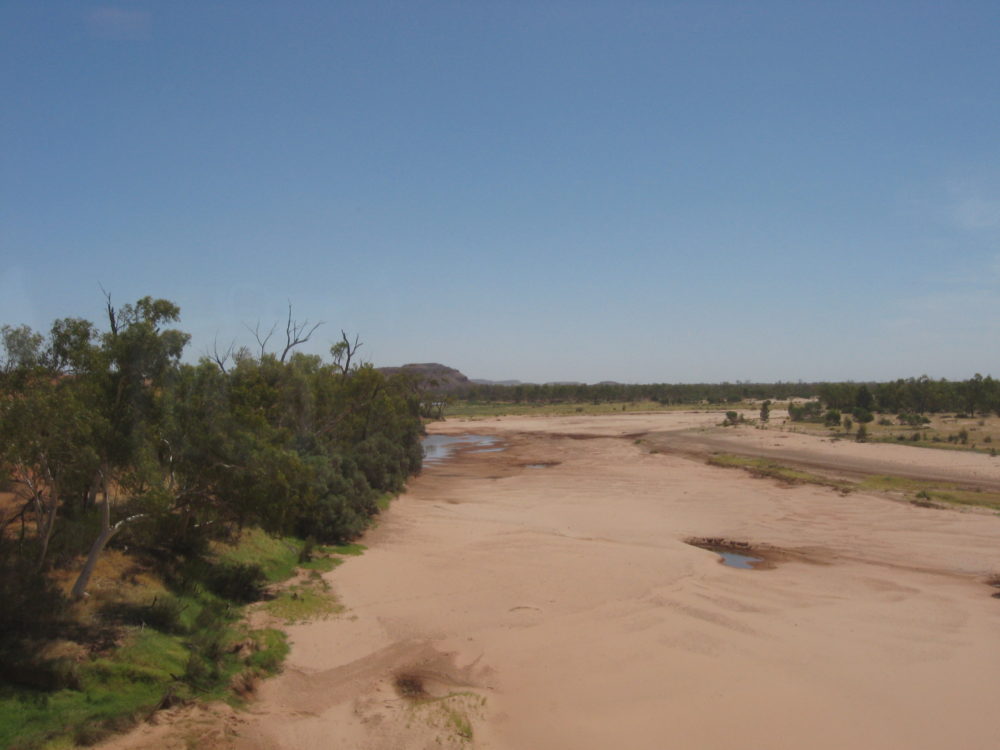
A new definition of the term.
The Ghan is the long-distance train dividing the Australian continent by running between Darwin in the north and Adelaide in the south. At one point in our two-night journey, the train’s PA system began alerting us that we would soon be crossing the Finke River. When we finally slowed and started across quite a long bridge, the river turned out to be nearly bone-dry. My encyclopedia describes the Finke as “a major intermittent river” in Australia.
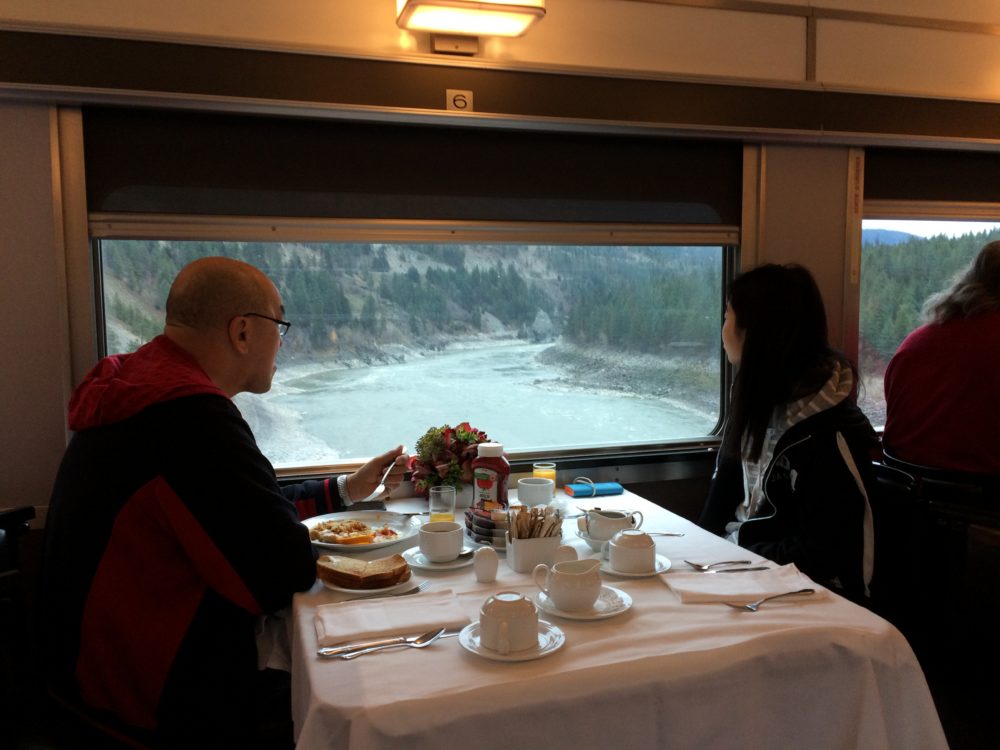
Dinner with a View.
Heading west and well into the Canadian Rockies, passengers on VIA Rail’s flagship Train #1 pause during one of the excellent dining car meals as the train crosses the Fraser River. The Canadian will follow this river off and on from here all the way to Vancouver on the Pacific Ocean.
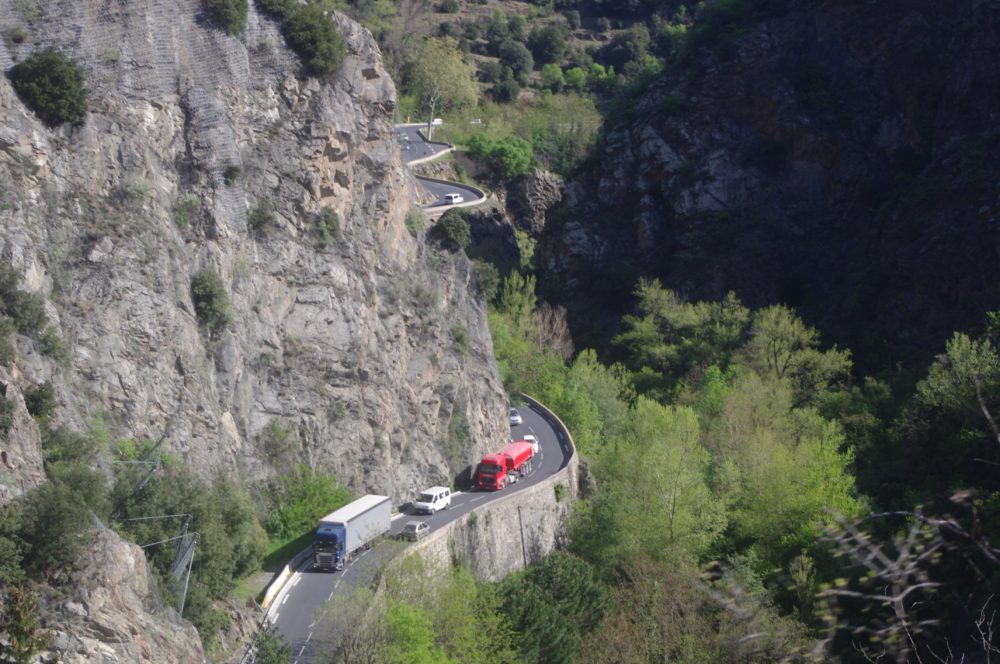
The View from Le Petit Train Jaune
I took this photo from The Little Yellow Train that runs for some 40 miles on a spectacular stretch of track through the Pyrenees Mountains along the French-Spanish border. For obvious reasons, it’s a very popular train for tourists, but about half the passengers are locals traveling to or from their homes.
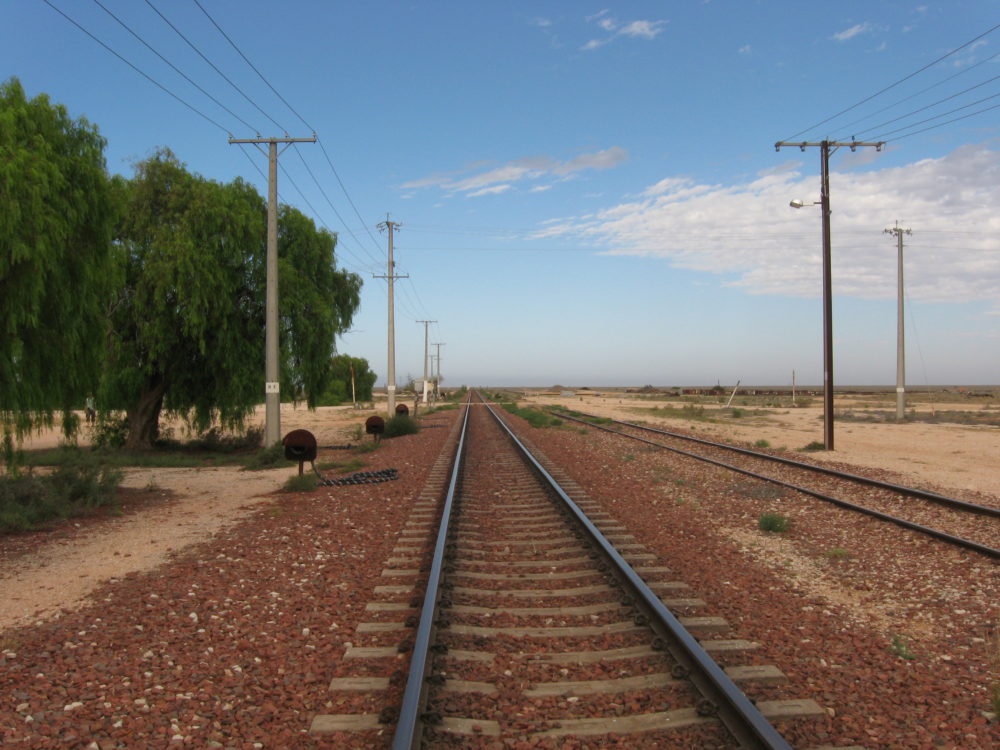
“Perth? Just Go Straight for 300 miles.”
Australia’s trans-continental train, the Indian Pacific, runs east to west across the continent, a three-night journey between Sydney (on the Pacific Ocean) and Perth on the Indian Ocean). This photo was taken in the town of Cook where the train is about to start traveling along the longest perfectly straight stretch of railroad track in the world: 297 miles.



